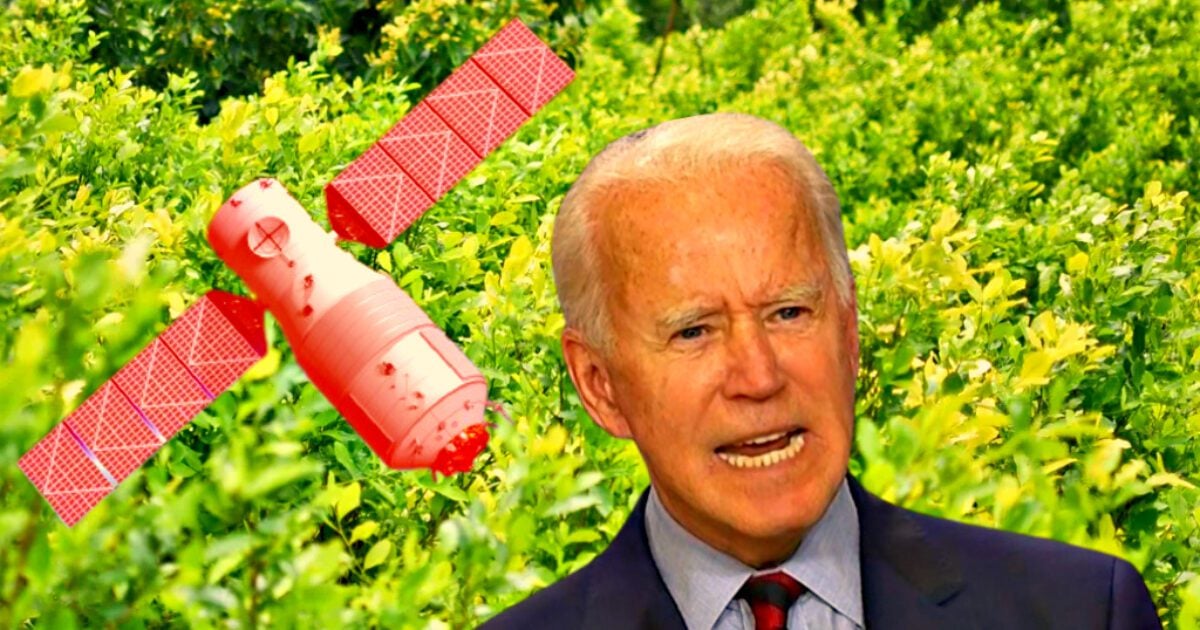Politics
Coke Tales: Biden Administration Suspends Satellite Monitoring of Coca Crops in Colombia Right as Production Surges – Move Comes as Nation Reels With White House Cocaine Scandal

The never-ending coke issues of the Joe Biden family and administration from hell have produced another infamous chapter.
A mere few days after the Secret Service wrapped up a hasty unsuccessful probe over cocaine found in the West Wing of the White House, it now surfaces that the US has suspended satellite monitoring of Colombia coca leaf fields – a move that comes amid a historical spike in production.
The move has horrible optics, and it’s fuelling an ongoing unrest over the deeply unsatisfactory results of the Secret Service probe: no suspect identified, case closed.
New York Post editorial reads:
“The White House is the most secure place on the planet, crawling with feds and fitted to the doorstops with video and other surveillance tech all aimed at keeping the world’s most powerful man safe.
Yet we’re somehow supposed to believe the men and women charged with protecting the president can’t find out who dropped an 8-ball in the West Wing?”
The rushed, 11-day investigation with no interviews, that unearthed zero clues, no DNA and no suspects, began after a series of shifting accounts about where exactly the drugs were found.
“No wonder the rumor mill is already spinning up to lay this whole mess in Hunter Biden’s lap. There’s no evidence the drugs are his.
Yet given that America’s already seen a massive federal effort so far to protect the ne’er-do-well First Son — everything from hindering investigations of his alleged crimes to setting him up to skate via his pending sweetheart plea deal — people can be forgiven for wondering.”
So, right on top of that, come the news of the suspension of the satellite monitoring of coca leaf plantations. What a PR move – NOT!
Associated Press reported:
“The Biden administration has quietly ditched a key gauge used for decades to measure success in the war on drugs, suspending satellite monitoring of coca crops in Colombia as cocaine production surges in South America.
A State Department spokesperson said the move was ‘temporary’ but gave no timeframe for data collection to resume or explain why it was suspended in the first place. It was also unclear whether satellite surveys would continue in Peru and Bolivia, which together account for about half of coca production in the Andean region.”
Far-leftist Colombian President Gustavo Petro is shying away from the rural areas where coca is grown to ‘chase large-scale smugglers and money launderers who reap the bulk of the drug trade’s profits’.
“’We are constantly assessing the effectiveness of various counternarcotics efforts and make changes to our efforts as needed’, the [US] State Department spokesperson said in an emailed statement. The spokesperson gave the comment on condition of anonymity, citing agency policy. ‘We continue to work with the Government of Colombia on the monitoring of illicit coca crops’.”
Under Petro’s administration, production of the plants and the finished drug are on the rise, and destruction of the illegal crops is down by 90% compared to last year.
“’This is a gift to the Petro Administration’, Florida Sen. Marco Rubio, the vice chairman of the Senate Select Committee on Intelligence and a senior member of the Committee on Foreign Relations, said in a statement to The Associated Press. ‘It’s another example of the Biden Administration giving concessions to far-left governments in the region’.”
It’s not like situation has eased or even stabilized under former leftist guerrilla Petro. He has pushed back, arguing U.S. should pay attention instead to the fentanyl crisis.
Late last year, Al-Jazeera reported on the newest data:
“Colombian lands planted with coca, the plant from which cocaine is made, reached their highest levels in two decades [in 2021], a United Nations agency has said in an annual report.
The UN Office on Drugs and Crime (UNODC) said […] that the area growing coca in Colombia shot up 43 percent from 2020, to 204,000 hectares (500,000 acres) in 2021.
Potential cocaine production also reached record levels last year at 1,400 tonnes, up 14 percent from 2020, the agency said.”
This latest data continues an upward production trend that dates back to 2014.
“’This is the highest figures in our 22 years of monitoring’, UNODC Andean and Southern Cone regional director Candice Welsh told reporters.”
Read the full article here


















